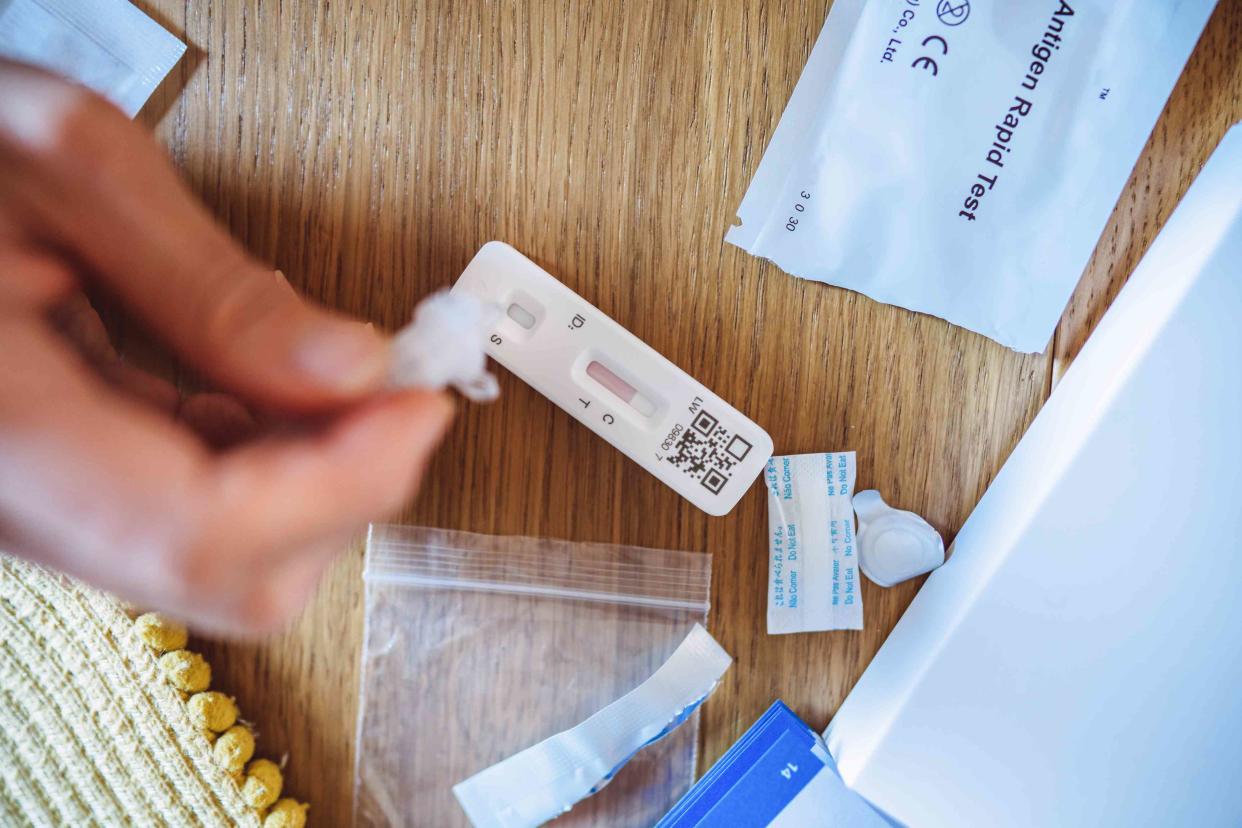The COVID Isolation Period Just Got a Lot Shorter

Images By Tang Ming Tung / Getty Images
- Oops!Something went wrong.Please try again later.
Key Takeaways
The CDC says people with COVID no longer need to isolate for five days.
They can leave their homes after being fever-free for 24 hours without the help of medications if symptoms are improving.
People with COVID-19 no longer need to isolate for five days before returning to work or school, the Centers for Disease Control and Prevention (CDC) said today.
Under the updated guidance, people can leave their homes if they have been fever-free for 24 hours without the aid of medications and if their symptoms are improving.
The CDC said it is making the change due to lower rates of COVID hospitalizations and deaths and the availability of tools to combat respiratory viruses.
“Today’s announcement reflects the progress we have made in protecting against severe illness from COVID-19,” said Mandy Cohen, Director of the CDC, in a press release. “However, we still must use the commonsense solutions we know work to protect ourselves and others from serious illness from respiratory viruses—this includes vaccination, treatment, and staying home when we get sick.”
The COVID isolation guidance now aligns with recommendations for influenza and respiratory syncytial viruses. The agency said that unifying the approach makes it easier to follow without relying on people to test for illness.
Streamlining those recommendations is “more logically consistent,” said Marc Sala, MD, pulmonary and critical care specialist and co-director of the Northwestern Medicine Comprehensive COVID-19 Center.
“The tradeoff is you’re going to have more transmission, and you just have to be ready to deal with what that entails,” he told Verywell.
The change may lead to people who are still contagious intermingling at work, at school, and in healthcare settings.
The virus appears to be evolving so that it causes less severe disease but is more transmissible than prior versions. Compared to the original Omicron variant, the now-dominant JN.1 may not cause someone to get quite as sick, but they are more likely to spread the virus to others.
“Because isolation and quarantine have long been associated with a positive test result, these new guidelines might seem like a major departure from the accepted science,” said Ashish K. Jha, MD, MPH, dean of the Brown University School of Public Health and former White House COVID-19 response coordinator, said in a statement. “The reality is that they represent an important, and reasonable, evolution in our response to the virus and to the impacts of isolation on people’s lives.”
Sala said it makes sense to promote public health recommendations that are clear and easy to follow. “You don’t want to make a recommendation that is just completely Ivory Tower and impractical,” he added.
However, he said, many people don’t follow the CDC COVID safety recommendations to begin with. A more lenient isolation policy is not likely to benefit those who are most vulnerable to disease.
“Unfortunately, if you make an accommodation to more of a general public opinion about isolation precautions, you end up conceding in a way that only benefits people who were not going to follow it anyway,” Sala said.
How to Stay Safe
While the isolation guidance has changed, the recommendations for other COVID-protective measures remain unchanged.
The best way to avoid serious illness from COVID is to be up-to-date with your vaccinations.
How Many COVID Vaccines Should You Have?
The CDC recommends that everyone 5 years and older get one dose of an updated COVID vaccine from Pfizer, Moderna, or Novavax. The latest vaccine formula is more protective against current viral variants than the original vaccine.
Children ages 6 months to 4 years need multiple vaccine doses to be considered up to date.
People who are moderately or severely immunocompromised should talk to a health provider about getting more vaccinations for adequate protection.
In the five days after someone leaves isolation, they should still take precautions, like wearing a mask, keeping a distance from others, and purifying indoor air or bringing in more outdoor air.
Wearing a snug-fitting N95 face mask can help reduce your chances of being exposed to COVID, even if others around you aren’t wearing masks.
The CDC guidance includes special considerations for people most vulnerable to serious complications of infection, like immunocompromised, pregnant, and older people.
Anyone who is at higher risk for complications from a COVID infection should consider taking Paxlovid (nirmatrelvir/ritonavir) or another antiviral medication.
According to Sala, Paxlovid is now relatively easy to access and proves to substantially reduce the risk of severe COVID.
What This Means For You
If you are sick with COVID, talk to a health provider if you are unsure about whether you would benefit from taking Paxlovid and for how long you should isolate or wear a mask to avoid spreading the disease to others.
The information in this article is current as of the date listed, which means newer information may be available when you read this. For the most recent updates on COVID-19, visit our coronavirus news page.
Read the original article on Verywell Health.

